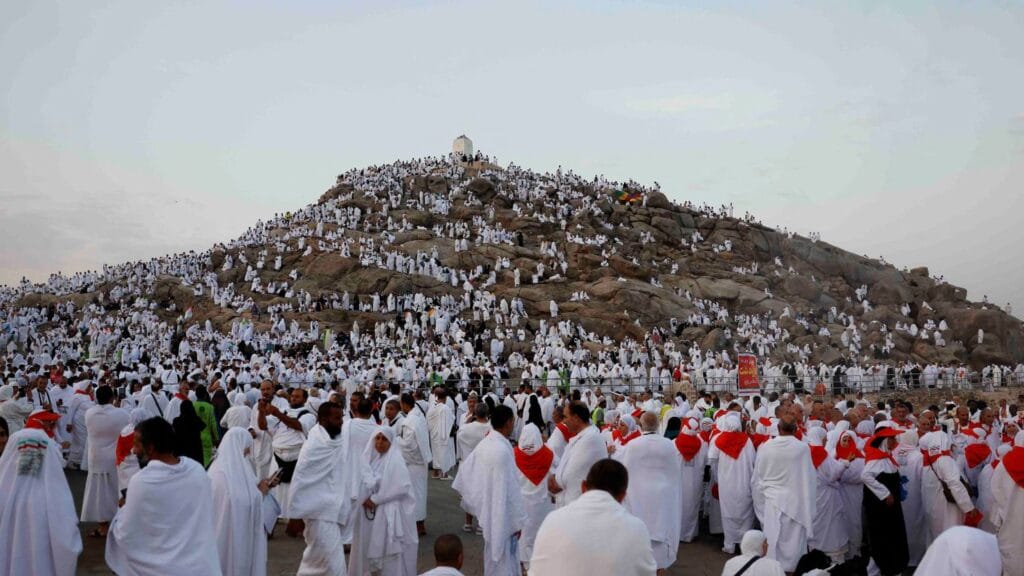Hajj holds a significant place in Islam as it is one of the five pillars of the religion. It is a mandatory religious duty for Muslims that must be carried out at least once in their lifetime if they are physically and financially able to do so. The pilgrimage to Mecca is a symbol of unity and equality among Muslims, as people from all walks of life and from all corners of the world come together to perform the rituals of Hajj. It is a time for spiritual reflection, repentance, and seeking forgiveness from Allah. The significance of Hajj lies in its ability to bring Muslims closer to their faith, to their fellow believers, and to Allah. It is a time for self-reflection, self-discipline, and selflessness, as pilgrims focus on their devotion to Allah and their commitment to living a righteous life.
Hajj is also a time for Muslims to commemorate the actions and sacrifices of Prophet Ibrahim and his family. The rituals of Hajj are deeply rooted in the story of Ibrahim, Hagar, and Isma’il, and the pilgrimage serves as a reminder of their unwavering faith and devotion to Allah. The act of stoning the devil, the sacrifice of an animal, and the circling of the Kaaba all have their origins in the actions of Ibrahim and his family. The significance of Hajj lies in its ability to connect Muslims to their history, their faith, and their community. It is a time for Muslims to come together in unity and solidarity, to seek forgiveness and mercy from Allah, and to reaffirm their commitment to living a life of righteousness and piety.
The history and origins of Hajj
The history and origins of Hajj can be traced back to the time of Prophet Ibrahim, who is considered the patriarch of monotheism in Islam. According to Islamic tradition, Ibrahim was commanded by Allah to leave his wife Hagar and their son Isma’il in the barren desert of Mecca. In a miraculous turn of events, a spring of water known as Zamzam emerged from the ground, providing sustenance for Hagar and Isma’il. This act of divine intervention is seen as a symbol of Allah’s mercy and provision, and it is commemorated by pilgrims who drink from the well during their Hajj journey.
The rituals of Hajj also have their origins in the actions of Ibrahim and his family. The stoning of the devil at the Jamarat, the sacrifice of an animal, and the circling of the Kaaba all have their roots in the story of Ibrahim’s obedience to Allah. The significance of these rituals lies in their ability to connect Muslims to their history and to remind them of the sacrifices made by Ibrahim and his family. The history and origins of Hajj serve as a reminder of the importance of faith, devotion, and obedience to Allah, and they provide a sense of continuity and connection to the early days of Islam.
The rituals and practices of Hajj
The rituals and practices of Hajj are deeply rooted in Islamic tradition and are designed to commemorate the actions and sacrifices of Prophet Ibrahim and his family. The pilgrimage begins with the wearing of ihram, a simple white garment that symbolizes purity and equality among all pilgrims. This act of dressing in a uniform manner serves as a reminder that all pilgrims are equal in the eyes of Allah, regardless of their social status or wealth.
One of the central rituals of Hajj is the tawaf, or circling, of the Kaaba. Pilgrims walk around the Kaaba seven times in a counterclockwise direction, symbolizing their devotion to Allah and their commitment to following in the footsteps of Prophet Ibrahim. This act of circling the Kaaba serves as a physical manifestation of the unity and solidarity among Muslims, as they come together to perform this sacred ritual.
Another important ritual of Hajj is the stoning of the devil at the Jamarat. Pilgrims throw pebbles at three pillars that represent Satan’s temptation of Prophet Ibrahim, symbolizing their rejection of evil and their commitment to living a righteous life. This act serves as a reminder that Muslims must constantly strive against evil and temptation in order to remain steadfast in their faith.
The sacrifice of an animal is also an integral part of Hajj, commemorating Ibrahim’s willingness to sacrifice his son Isma’il at Allah’s command. Pilgrims offer an animal as a symbol of their obedience to Allah and their willingness to make sacrifices for the sake of their faith.
The spiritual and personal significance of Hajj for pilgrims
Hajj holds immense spiritual and personal significance for pilgrims, as it is a time for self-reflection, repentance, and seeking forgiveness from Allah. The pilgrimage provides an opportunity for Muslims to cleanse their souls, purify their hearts, and renew their commitment to living a righteous life. It is a time for spiritual growth, self-discipline, and selflessness, as pilgrims focus on their devotion to Allah and their dedication to following in the footsteps of Prophet Ibrahim.
The journey of Hajj also holds personal significance for many pilgrims, as it is often seen as a once-in-a-lifetime opportunity to fulfill a religious obligation and seek closeness to Allah. Many pilgrims spend years saving money and making preparations for their journey to Mecca, viewing it as a deeply personal and transformative experience that will have a lasting impact on their faith and their lives.
For many pilgrims, Hajj is also a time for seeking forgiveness from Allah for past sins and transgressions. It is seen as an opportunity for spiritual renewal and purification, as pilgrims strive to rid themselves of negative traits and behaviors in order to become better Muslims. The spiritual significance of Hajj lies in its ability to bring about personal transformation, spiritual growth, and a renewed sense of devotion to Allah.
The journey of Hajj: from preparation to completion
The journey of Hajj begins long before pilgrims set foot in Mecca, as they spend months or even years making preparations for their pilgrimage. Many pilgrims save money, make travel arrangements, and seek guidance from religious scholars in order to ensure that they are fully prepared for this sacred journey. They also engage in acts of worship such as fasting, prayer, and charity in the months leading up to Hajj, in order to purify themselves spiritually and mentally.
Once in Mecca, pilgrims perform a series of rituals over the course of several days, beginning with the wearing of ihram and the tawaf around the Kaaba. They then proceed to Mina, where they spend the night before moving on to Arafat for the most important day of Hajj. On this day, known as the Day of Arafat, pilgrims stand in prayer and supplication from dawn until sunset, seeking forgiveness from Allah and asking for His mercy.
After Arafat, pilgrims move on to Muzdalifah, where they spend the night before returning to Mina for the stoning of the devil at the Jamarat. They then perform the sacrifice of an animal before returning to Mecca for another tawaf around the Kaaba. The journey concludes with a final tawaf before pilgrims return home with a renewed sense of faith and devotion.
The communal and global significance of Hajj
Hajj holds immense communal and global significance for Muslims around the world, as it is a time for unity, solidarity, and coming together as one community. The pilgrimage brings together people from all walks of life, from all corners of the world, regardless of their social status or wealth. It is a time for Muslims to set aside their differences and come together in devotion to Allah, reaffirming their commitment to living a life of righteousness and piety.
The global significance of Hajj lies in its ability to connect Muslims from diverse backgrounds and cultures, fostering a sense of unity and brotherhood among believers. It serves as a reminder that all Muslims are equal in the eyes of Allah, regardless of their race, nationality, or social status. The communal significance of Hajj lies in its ability to bring people together in worship, prayer, and devotion to Allah.
Hajj also holds global significance as it serves as a reminder that Islam is a universal religion that transcends national boundaries and cultural differences. It is a time for Muslims from all over the world to come together in Mecca, demonstrating the global reach and impact of Islam as a faith that unites people from diverse backgrounds under one common belief.
The impact of modernity on the traditions of Hajj
The traditions of Hajj have been impacted by modernity in various ways, as advancements in technology and transportation have made it easier for Muslims to make the journey to Mecca. Modern infrastructure has made it possible for larger numbers of pilgrims to perform Hajj each year, leading to concerns about overcrowding and safety during the pilgrimage.
The rise of social media has also had an impact on the traditions of Hajj, as pilgrims are now able to document their journey in real-time through photos and videos shared on various platforms. While this has allowed for greater visibility and awareness about Hajj among non-Muslims, it has also raised concerns about maintaining the sanctity and spirituality of the pilgrimage in an age where everything is shared online.
In recent years, there has been an increased focus on making Hajj more accessible for people with disabilities or special needs, with efforts being made to improve facilities and accommodations for these individuals. This reflects a growing awareness about inclusivity within the Muslim community and a desire to ensure that all believers have equal access to performing this important religious duty.
Overall, while modernity has brought about changes in how Hajj is performed and experienced, it has also presented new opportunities for Muslims to connect with each other on a global scale and share their experiences with others around the world. As technology continues to advance, it will be important for Muslims to find ways to balance these new developments with maintaining the spiritual integrity and sanctity of this sacred pilgrimage.

